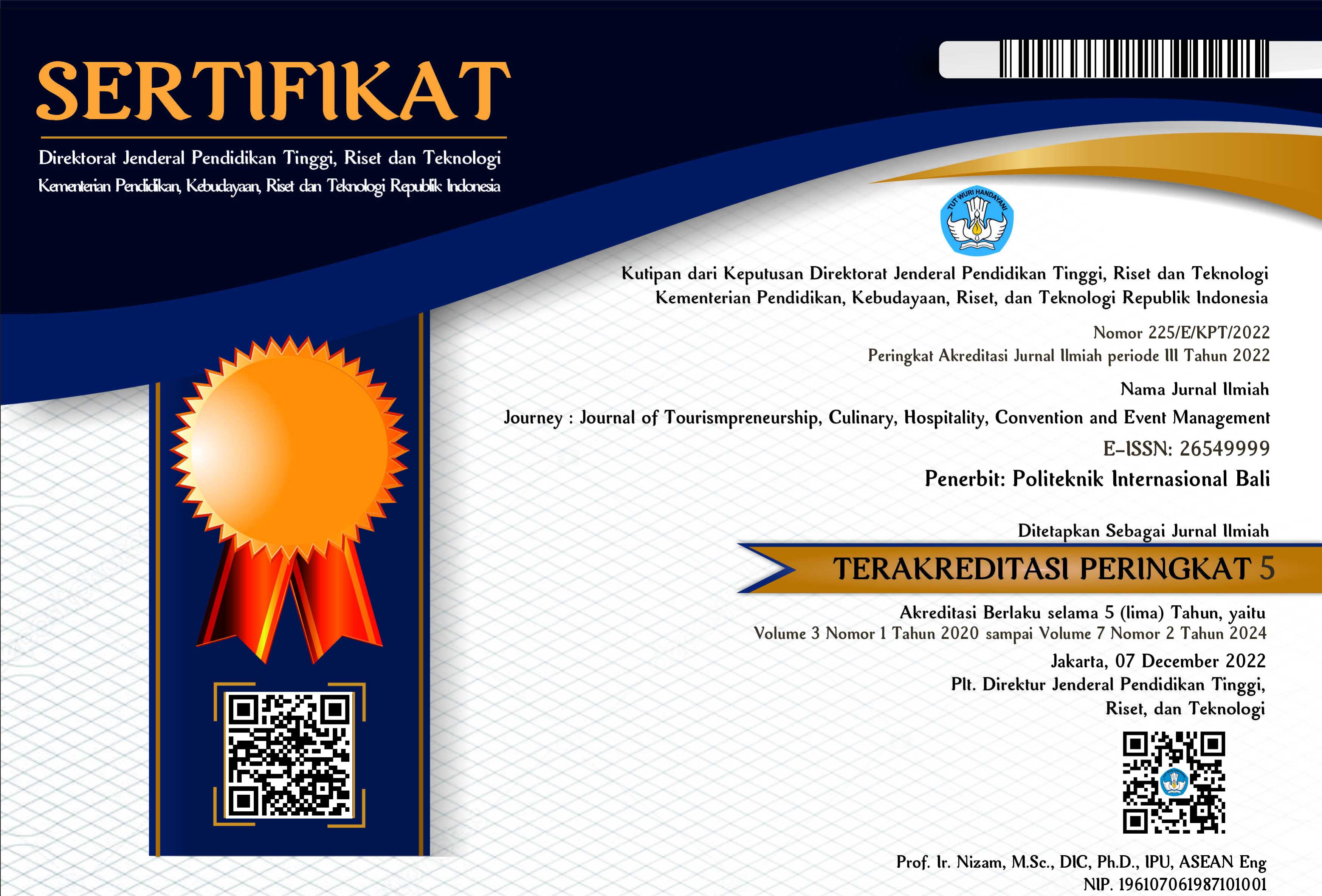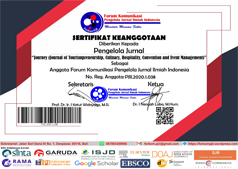Analysis Of The Level Of Integration And Spatial Connectivity In The Space Configuration Of Bongkasa Pertiwi Tourism Village Based On Space Syntax
Abstract
As a quite popular Tourism Village, Bongkasa Pertiwi Village, located in Badung Regency, Bali Province, has experienced many spatial developments within its territory. The development was based on the findings of prior investigations show the phenomenon of spatial transformation of residents' houses both as a place for tourist accommodation and the economy. The spatial transformation that occurs increases the density of buildings and changes the spatial layout of the village area, so that in the future as a tourism village that will continue to grow, To find out, more research is require to measure the optimal level of spatial configuration in terms of inter-spatial connectivity and integrity in village spatial planning. The importance of this research is that the findings can be utilized as guidelines for village spatial design, making it more efficient and improving the quality of interaction between space users (residents and tourists). This study uses a Quantitative - Experimental method based on Space Syntax analysis. The results showed that the average level of connectivity was 2.19407 (highest "5"), integrity 0.286216 (highest "2.11"), and intellibility at R2: 0.0107275 (best close to "1"), The analysis' findings reveal a limited amount of connection between locations (space / area), so that social interaction that occurs between actors in village spatial planning is also low. These results indicate that the development of interaction center points is very much needed in the current Village Spatial Planning. The development must be based on the highest spatial connectivity-integration points based on space syntax analysis (found 4 area points) in order to obtain optimal results.
















